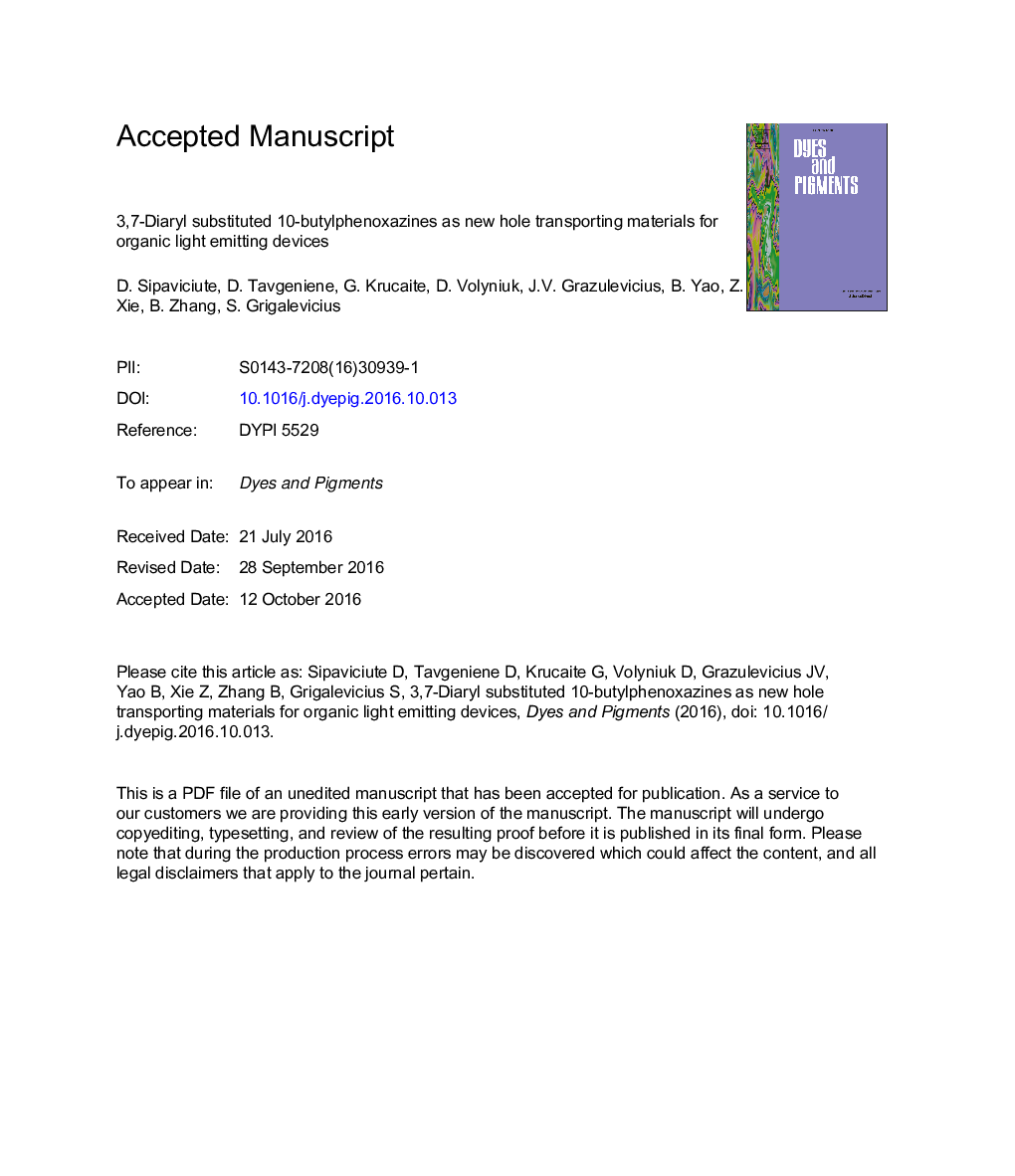| Article ID | Journal | Published Year | Pages | File Type |
|---|---|---|---|---|
| 4766316 | Dyes and Pigments | 2017 | 27 Pages |
Abstract
Phenyl, naphthyl or vinylphenyl substituted 10-butylphenoxazines were synthesized by a multi-step synthetic rout. The materials were examined by various techniques including thermogravimetry, differential scanning calorimetry, electron photoemission spectroscopy and time of flight method. The materials were found to show adequate thermal stability having initial thermal degradation temperatures in the range of 280-310 °C. Glass transition temperatures of the low-molar-mass materials were in the rage of 31-65 °C. The electron photoemission spectra of thin layers of the derivatives showed low ionization potentials of 5.1-5.15 eV. Hole drift mobilities in thin layers of some derivatives exceeded 2 Ã 10â4 cm2Vâ1sâ1 at an electric field of 4 Ã 105 Vcmâ1s at room temperature. These materials have been tested as hole transporting layers in electroluminescent bilayer OLEDs with Alq3 as the emitter. The device with hole transporting layer comprised of 10-butyl-3,7-di(1-naphthyl)phenoxazine exhibited the best overall performance with very low turn-on voltage of 3.6 V, a maximum luminance efficiency of 2 cd/A and maximum brightness of about 7420 cd/m2.
Keywords
Related Topics
Physical Sciences and Engineering
Chemical Engineering
Chemical Engineering (General)
Authors
D. Sipaviciute, D. Tavgeniene, G. Krucaite, D. Volyniuk, J.V. Grazulevicius, B. Yao, Z. Xie, B. Zhang, S. Grigalevicius,
